-
Posts
595 -
Joined
-
Last visited
Content Type
Forums
Detector Prospector Home
Detector Database
Downloads
Posts posted by ColonelDan
-
-
While detecting several hundred yards south of the Daytona Beach Pier, an elderly gentleman approached me to tell me about a lost ring that was “flung” from the patio deck of their hotel and asked if I might be able to find it. He said they looked for it several times without any luck. I asked him several questions such as how long ago this happened and in what general area did he think the ring landed. He told me he could show me the area and where they thought it landed after being tossed off the hotel deck.
As we walked over to the area below the patio he told me how all this happened. It seems his grandson threw something off the patio onto the beach and the ring went with whatever it was he “flung” [the grandfather's word]. When we arrived at the area below the patio, the gentleman described where they were standing on the deck and about how hard his grandson “flung” whatever it was. I laid out a general search area based on what the grandfather described. Fortunately it was in dry sand not more than 15 feet from an elevated patio overlooking the beach.
I began to grid search the area and within several minutes the distinct tone of gold rang out. I pushed my scoop into about 4-5 inches of dry sand and out popped a ring. Not showing what I'd found, I asked him to describe the lost ring. He said it was white gold but that's all he knew. He would have to ask his grandson's wife for a more specific description. I told him to please ask her to come see me.
A few minutes later a young lady approached me and identified herself as the wife of the man who lost his ring. I asked her to describe it in as much detail as she could and she nailed it to a T. I showed her the ring I'd found and a big smile brightened her face as she exclaimed “That would be it!! Thank you, thank you, thank you!!!”
I asked if I could take a few photos and she agreed. She then quickly headed back to the surf where her husband and the older gentleman were. As I resumed my detecting near the water line, I caught site of the grandfather making a bee line my way with a big smile on his face. He couldn't thank me enough. I simply told him that I was happy I could help. After we exchanged a few pleasantries, he wished me “good fortune in my day's hunt” and rejoined his family.
That was the only ring I found that day but I walked away from Daytona Beach convinced beyond any doubt that my time was extremely well spent as there were big smiles all around for those visitors from South Carolina!
-
The way I “classify” beach sand determines which search mode I use on my Equinox. It works well for me on our central Florida beaches.
Since all beaches differ in terms of salinity/mineralization, I’d be interested in hearing from other beach hunters if they too make this “4 layer classification” of beach sand conditions.
Dry Sand: area where the surf doesn’t or hasn’t covered. The sand is extremely dry and where most beach goers spread their towels and chairs. Area to the lady’s far left in the photo.
Damp Sand: Area where the surf once covered but has recently receded to the point where it no longer does leaving the sand still somewhat damp. Smooth area to the lady’s immediate left.
Wet Sand: Area where the surf still covers as the waves come on shore but recedes with wave action leaving the sand distinctly wet. Smooth dark area to the lady’s direct front and immediate right.
Surf: Self explanatory...in the water.
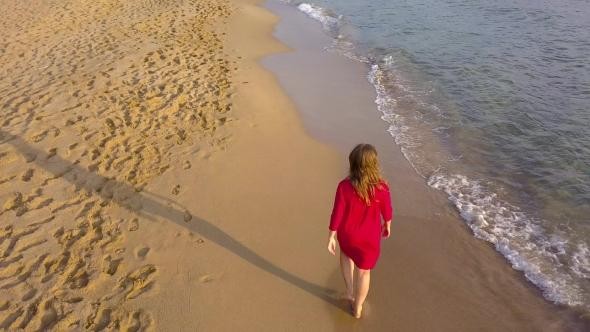
In the Dry and Damp areas, Beach 1, All Metal with sensitivity, recovery speed, and F2 settings adjusted for conditions works best. If I try to use Beach 1 and All Metal in the Wet sand and Surf, the amount of falsing naturally increases significantly.
In the Wet sand and Surf, Beach 2, discrimination activated and sensitivity being situationally dependent works best...the EQX settles down considerably.
This simply confirms Minelab’s recommendation but I’ve distinguished between damp and wet sand where they use dry, wet and surf classifications.
Question: Anyone else see a performance difference in Damp and Wet sand modes/settings?
-
Choosing between Beach 1 and 2 is not the only setting you need to address. In either mode you should “dial in” the EQX to suit the conditions. Noise cancel, Ground Balance, Sensitivity, recovery speed, iron bias all interact to give you optimal performance.
You can certainly run in factory settings but you can optimize the capabilities of the EQX by “dialing in” those factors I listed.
Just the view from my foxhole...
-
Thank you all for those kind words. I’ll update our progress on this site as events unfold.
-
17 minutes ago, GB_Amateur said:
Is this the same site that Tom Dankowski wrote up for Fisher here?
No, it’s not the same site.
-
-
17 minutes ago, FloridaSon said:
Excellent artifacts Col. Dan! Were you Using your beach three tones settings?
These were found pre-EQX. The team and I were using CTX 3030s and Excalibers. My CTX was set to 2 tones, open screen and optimized for relics. When relic hunting, I always use all metal and dig everything...iron artifacts are valued too. 😉
-
I and several detecting buddies supported a local museum a year ago by metal detecting a Second Seminole Indian War site that was occupied by the 2nd Dragoons from December 1837 to March of 1838. Below is just a sampling of our finds from that area. Many more uniform buttons, musket balls of various calibers and such not shown here came from our hunts.
We suspect that one of their supply boats either sank or capsized since all the finds below were in the same general 25 square yard area. In digging down to retrieve these artifacts, I did hit wood deep in the muck ergo our thoughts that these finds came from a lost boat.
The fort was constructed on the shores of a local lake and all finds thus far have been from that lake. We've yet to find the exact location of the fort itself but we have a good idea where it was. A modern road and house construction however prevents us from successfully searching the suspected area.
dragoon uniform button
period ring
buttons and a few musket balls
Bayonet with scabbard
I found this breast plate in knee deep water and 16 inches deep in the lake muck, This is just the way it came from the muck. No cleaning was needed!
raw anchor after encrustation was removed. It took two of us over 45 minutes to extract this anchor from the lake's muck.
preserved anchor
One of our displays we made for the museum.
We'll be headed back to the site in the coming year. -
Steve and Clive, Since Florida beach hunting is my life, I’ll add the view from my foxhole to this interesting discussion.
Without rehashing the good points brought up by both Steve and Clive, I’ll just say that I’ve used both large coils and the stock coil searching our beaches and the surf. In the end, I now use the stock coils exclusively. Yes, the larger coil covers more ground with each swing but with less ease of use and reduced sensitivity as I’ve seen. As Steve says, the EQX was tuned for the 11” coil and I believe I’ve proven that...at least to myself.
I know other well accomplished detectorists use the large coils on the beach and in the surf and with some success. To each his own, but for me, I prefer the enhanced sensitivity on low conductors the 11” coil seems to give me...as I always say however, that’s just the view (and preference) from my foxhole.Good job to both Clive and Steve. Salute!!
-
Thank you Clive.
-
I've sometimes wondered why many in our hobby relate to pirates and use the pirate logo to symbolize their activity. I've also heard folks use the term "looter" to describe those hunting primarily on beaches. If we consult Webster, neither of those two describe our hobby in my mind:
Pirate:
a person who robs or commits illegal violence at sea or on the shores of the sea.
any plunderer, predator, etc.: confidence men, slumlords, and other pirates.That's certainly doesn't describe the folks I know in this hobby!
Loot/Looter
anything taken by dishonesty, force, stealth, etc.: a burglar's loot.
to carry off or take (something) as loot: to loot a nation's art treasures.
to despoil by taking loot; plunder or pillage (a city, house, etc.), as in war.
to take loot; plunderThis doesn't fit either does it? We're not dishonest plunderers.
So neither fits or describes what we do.
Now a word that comes close but not quite is Scavenger
a person who searches through and collects items from discarded material.
But then the items we collect aren't really "discarded" are they? For the most part, they're lost
So my simple soldier mind says that we are simply....Treasure Hunters
Treasure Hunter:
One who searches for anything of value or that which is highly prized.Yes, It's cold outside and our beaches aren't filled with depositors so I confess to being somewhat bored and have time on my hands right now but hey....I'm fully retired and therefore authorized to such free time, thoughts and wonderments! 😎
Soldier on....👍
-
6 hours ago, relicmeister said:
What I like is coming up with simple solutions yourself ( like colonel dans) not every thing has to be purchased, although for some it’s easier to just order something somebody was motivated enough to offer as a hobbyist/ entrepreneur.
My solution was a 1/2” diameter silicone tube that wraps around the handle and is held by an 8” long zip tie. Many easy solutions for this
I very much like your solution! I'll give that a try tomorrow. It's obvious to me that yours will be better than mine in water for sure and would serve the same purpose all around.
Good job!!! 👍
-
I love clever ideas like this Sure Grip that makes detecting life easier.
This is what I did before I saw the Sure Grip. I cut a swimming noodle to a convenient thickness, cut a slit in it so I could simply slip it around the top of the handle. It buffers the control box from weighing on my hand and stays on with no problem. It's nice and comfy but easily removed when cleaning my EQX. The Sure Grip however would be better when submerged in water.
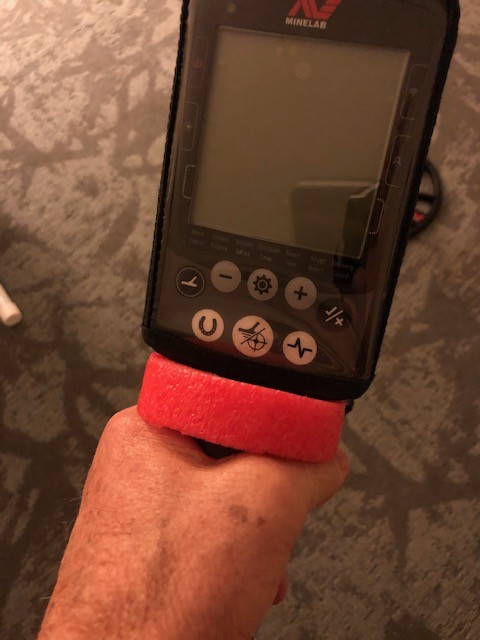
-
1 hour ago, dewcon4414 said:
That’s thinking outside the box. In the water where I hunt I wonder if cause the cover to expand away from the coil creating drag? I say that because that what a CTX cover does. Those braces come away and acts like a Ritter.
I never go without a cover for two reasons 1... i wear the out quickly scrubbing the coil on the sand. 2.... those coils aren’t cheap.
I personally haven’t experienced any expansion or undue drag in the water as you describe.
-
Yes, a sand scoop is essential and a finds pouch is a "very nice to have" item. I've yet to detect in Hawaii but here are some general thoughts regarding beach hunting: Before you go, do the update 2.0 and use the F2 Iron Bias feature and then test a few targets you're most likely to find so you're familiar with what your EQX is telling you regarding a variety of those targets--coins, gold and silver jewelry.
When you get to the beach, select Beach 1 mode and do a noise cancel first then ground balance. You'll most likely run into some very unfriendly sand conditions so you'll have to "dial in" the EQX to run as stable as possible. The relationship between recovery speed, the F2 setting and sensitivity will be key. Start by using Beach 1 on the dry and damp sand and Beach 2 on the wet sand and surf. Observe where the most people are on the beach...towel line, walk line, activity centers and about knee deep in the surf at low tide. Look for cuts in the sand where the surf has eroded the beach, low areas and ripples. Hit those areas with your coil low, level and slow. Grid the area to cover the area as thoroughly as possible. When you hit a target, I suggest you spiral around it to see if you have a coin line or other valuable targets in that same area. Good targets like gold tend to sink to similar depths. If you hit lead sinkers, stay in that area...its a good sign that gold is lurking nearby.
I'm sure others, especially those who have hunted Hawaii, will add their thoughts, The folks on this forum are very friendly and eagerly willing to help!
Good luck
-
2 hours ago, flakmagnet said:
That's an interesting approach to a consistent beach-hunting problem.
Do you have any opinions about just running the coil without the cover? I have tried that on many hunts and find it works quite well with no damage to the coil.
A hunting buddy of mine does that and with no apparent issues...thus far. However, since I hunt exclusively and frequently on beaches, I've seen sand wear down any surface with ease and fairly quickly so I've always avoided swinging a naked coil on the beach--just my personal preference. If it works for you, go for it. As I always say, "If it ain't broke, don't fix it!" 😉
-
I've read a number of threads on the best way to cover and protect the coil and there's been a lot of good ideas for sure!
I thought I'd add mine for those who primarily hunt sandy beaches like I do.
Over the years, I've tried several ways to keep sand out since a build up between the coil and cover could and will result in a degree of false signals/chatter. What I finally determined was that sand is the "cleverest" of all elements with which I've had to contend. It can and does get into everything. No matter how well I thought I'd sealed the cover onto the coil, sand still managed to get in there...granted not much but my thinking is that if it's not supposed to be there, I want it outta there. And the one time I tried sealing the cover, it was he** to get the cover off! Conclusion; Sand will always get in but with most methods of sealing the cover, there's no way for it to get out!
I decided to find a way to give those clever grains of sand a way out. I came up with this solution about 5 or 6 years ago and it's worked well for me on my Florida beaches. I simply drilled holes in the cover which allows the water to rinse out the sand while still protecting my coil from bumps and scrapes. After searching the dry and wet sand, a few swipes in the surf and the sand is rinsed away. When I get home and remove the cover, there is only a very few isolated grains between the coil and cover...not nearly enough to cause me any trouble whatsoever.
Works for me but your mileage may vary and I'm always open to better ideas.
Note: I drill the holes from the inside out so there are no ridges on the inside which would inhibit efficient draining.
Just one method from my sandy foxhole.....
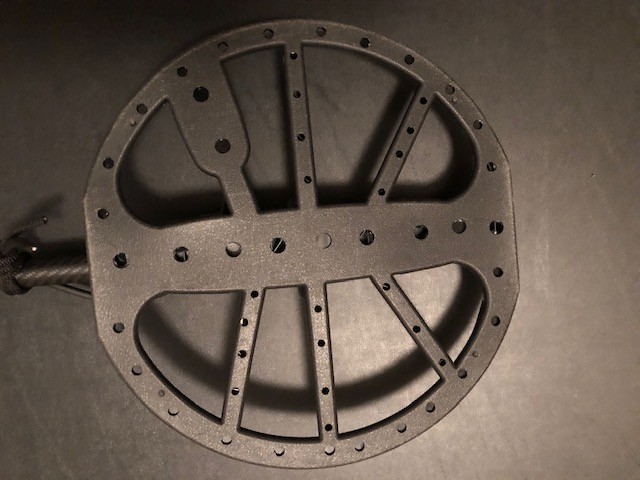
-
Great post Steve! Thanks.....
-
A question on another forum sparked my attention so I pulled out a few of mine to see how they rang up on the Equinox 800. The coins were laid separately on the ground so this was nothing more than an air test in Field 1.
Coin Date VDI
$0.50 1860 3 (California Gold fractional coin)$2.50 1925 15
$5.00 1881 18
$10.00 1888 21
-
Good job Chase! 👌🏻
-
49 minutes ago, GB_Amateur said:
My interpretation of your calculation is a bit different. I would say: "Given what we do find, there's sure a lot of treasure out there!" And it follows that we'll never get it all, so keep looking.
I totally agree!
-
Even if you shrink the size of the beach to 300 ft wide by 1 mile long ( normal for Daytona, Cocoa and St Pete) you're still looking at 19,008,000 sq inches.
Now let's say through effective beach reading skills you focus on the towel line, wet sand and shallow surf. And let's say that reduces your actual search area by 50%. You're still looking at 9,504,000 square inches compared to the 95 sq inches in your 11" coil and you're still searching for that elusive 1 sq inch target! 😝
Pretty daunting eh? 😁
-
In my signature, I wrote that our challenge is : Big Beach, Little Coil, Tiny Targets.
Just as an amusing exercise, I thought I'd see what that looks like in terms of square inches.
1 square mile of beach = 4,014,490,000 square inches
Standard 11 inch coil = 95 square inches
a good target = 1 square inch...maybe
Given that reality, I think it's amazing we find what we do! Of course you can reduce that beach area with careful beach reading skills but you get the point!Big Beach, Little Coil, Tiny Targets.😁
-
“Do you use these covers to protect from saltwater spray?”
Yes, Protection from salt spray and sand.


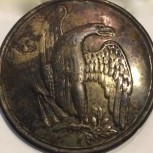
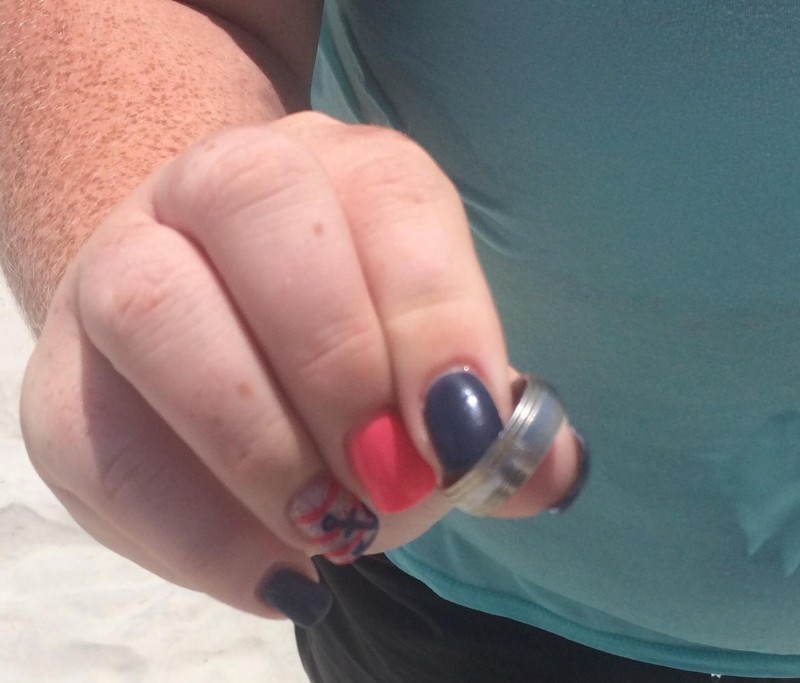
The Little Silver Kitty Returned
in Metal Detecting For Jewelry
Posted
I wrote this up awhile back for Kellyco's website but never posted it here for some reason. After posting the story of the Flung Ring return, I thought, why not post this story on the forum since it was one of the most personally meaningful returns of my metal detecting life. Although the returned item was not all that valuable in monetary terms, it was priceless to the lady who lost it and became even more priceless to Mary and me as we put it back in her hands.
~~~~~~~~~~~~~~~~~
My wife Mary and I were spending a nice day at Daytona Beach Pier this past summer..she for painting and me for detecting. While I was hunting the beach, Mary struck up a conversation with a lady she met there.
The lady was very pleasant and told her that she and her boyfriend were homeless and lived in a makeshift tent right on the beach. She said the local police leave them alone as they routinely clean up the beach of litter and don’t bother anyone. As the conversation continued, she told Mary that she had lost a sterling silver charm the day before and although she and her boyfriend searched for hours, they failed to find it.
The small charm was the head of a kitty with red “ruby” stones on its head and black eyes. The little charm was extremely meaningful to her and likely one of the most valuable items she owned. Mary told her of my metal detecting and asked if she would like me to try and find it. The lady was overjoyed at the prospect but said she didn’t hold out much hope of ever getting her little kitty back.
Mary brought me over to the area where the lady said she thought it was lost and I began the grid search. About 10 minutes later I got that familiar exciting high tone of silver. In my scoop was a little kitty’s head with red “ruby” stones and black eyes!
When I brought it to her, she began to tear up, thanked me profusely and asked if she could hug me. She called over to her boyfriend who was busy making little items out of palm fronds he sold to tourists. The smile on her face and the tear in her eye was absolutely the best reward Mary and I could have ever hoped for that day.
~The Challenge: Big Beach; Little Coil; Tiny Targets~
~"Simplicity is the ultimate sophistication"~ Leonardo da Vinci
~Pre-determined settings serve only to get you in the ballpark. It’s up to you to pick the best seat~